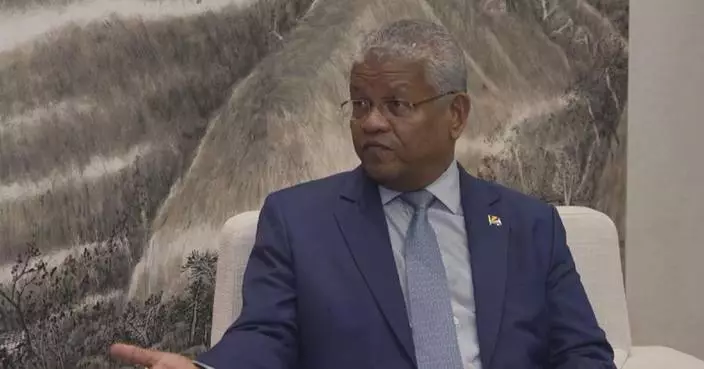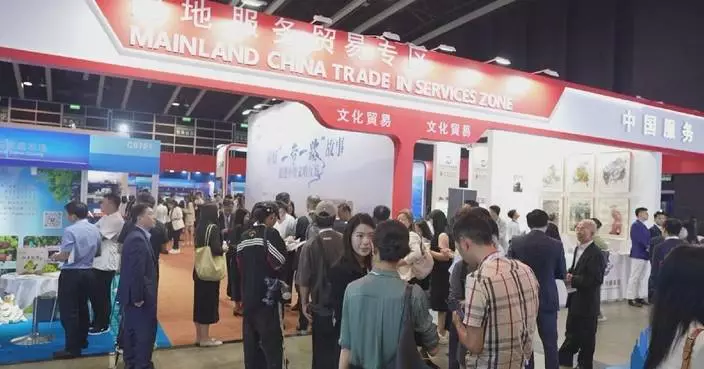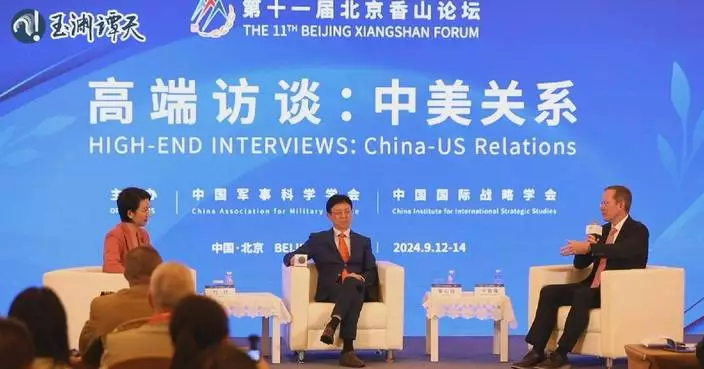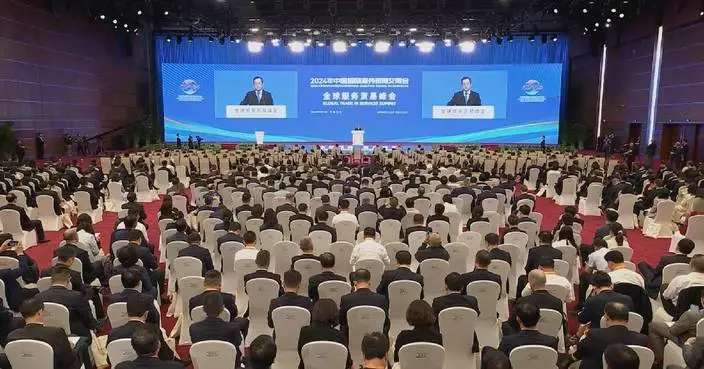The Chinese government is doubling subsidies offered to consumers who trade in their old cars for new electric vehicles, as part of a new policy aimed at stimulating the economy.
Consumers may be eligible for a subsidy of up to 20,000 yuan (about 2,804 U.S. dollars) -- double the amount offered in the previous round, if the trade-in involves a new electric vehicle.
For new gas-powered cars, the subsidy has increased from 7,000 yuan to 15,000 yuan (about 2,100 U.S. dollars)
"In recent years, China's domestic car sales haven' t grown much. This trade-in program is aimed at stimulating car purchases at home. Since 2018, our electric vehicles have improved significantly in terms of range and energy efficiency. The government now encourages people to trade in their older EVs for newer, more efficient models," said Xu Haidong, deputy chief engineer of China Association of Automobile Manufacturers.
Funding for the initiative - around 150 billion yuan - largely comes from ultra-long special treasury bonds sold this year by the central government.
Foreign and joint-venture auto-manufacturers are also getting in on the action, offering their own deals.
BMW Brilliance, for example, has 12 fuel models and 7 electric models that qualify for the trade-in program.
"Trade-in program treats domestic and foreign companies equally, reflecting China's commitment to an open market and fair competition. To offer consumers more choices, BMW has rolled out electric models across nearly all of our product lines. This not only meets the growing demand for eco-friendly vehicles but also supports green transition in the auto industry," said Qin Nan, BMW Brilliance senior manager for North China.
The program aims to get older vehicles off the roads, including fuel cars that meet or fall below China's National Stage III emissions standards, and electric cars registered before April 30, 2018.
New cars eligible for subsidies include electric vehicles listed in official catalogs, or fuel cars engines under two-liters - all pushing for more eco-friendly consumption.
"The electric vehicle market is growing rapidly. Last year, EV sales accounted for over 30 percent of all car sales. This year, we expect that number to reach 40 percent. In July alone, electric vehicles made up almost 50 percent of the market. This trade-in policy will encourage even more people to switch to electric cars, further driving green consumption," said Xu.
China has been the world's largest producer and seller of NEVs for nine straight years.
The government's plan to turn the economy green by 2035 includes making electric vehicles the mainstream choice for new car sales.

China doubles trade-in subsidies for electric vehicles
China's scientific expedition team on Thursday obtained critical ice cores during their investigation of the Qinghai-Xizang Plateau, which is known as Asia's "water tower".
The region encompasses "one glacier, two lakes and three rivers". It is home to Purog Kangri Glacier, the world's largest glacier in the mid to low-latitude regions, as well as Siling Lake and Namtso Lake, the largest and second-largest lakes in Xizang, respectively. It is also the birthplace of the Yangtze River, Nujiang River and Yarlung Zangbo River.
The climate in the region is complex and changeable, and its ecosystem is very fragile, and meanwhile it is a pivotal area for Xizang's economic and social development.
During their expedition, the team drilled for ice cores at different depths overnight on Thursday, aiming to capture climate records from different time scales.
Ice core drilling is typically conducted during the night and early morning when the ice temperature is sufficiently low.
Ice cores serve as vital records of global climate and environmental changes. The sediments and bubbles within these cores are clues to understanding the history of Earth's climate. By studying the bubbles captured in ice cores, scientists can analyze atmospheric composition, including carbon dioxide levels, over hundreds of thousands of years.
Yao Tandong, an academician at the Chinese Academy of Sciences (CAS) and leader of the expedition, and Lonnie Thompson, a renowned American glacier expert and foreign academician at CAS, conducted their scientific expedition on the glacier Thursday morning.
Through helicopter observations, thickness-measuring radar, satellite image comparison and other methods, the scientific expedition team has found that the surface area of the Purog Kangri Glacier has shrunk by 10 percent over the past 50 years.
The average altitude of Purog Kangri Glacier is 5,748 meters, with the highest point reaching 6,370 meters. Due to global warming, the glacier is melting rapidly.
"So does the melting of glacier surface -- the higher the altitudes, the less the ablation volume, while at lower altitudes, it accumulates and forms branch-like rivers on the ice surface. Currently, these branches extend up to altitudes of 6,000 meters," said Xu Baiqing, a research fellow of the Institute of Tibetan Plateau Research under the CAS.
Research indicates that the accelerated retreat of glaciers on the Qinghai-Xizang Plateau over the past 40 years reflects a broader trend, and the melting rate of the Purog Kangri Glacier is relatively slow compared to the overall situation of the plateau.
The temperature changes within the glacier also attributed to the great difficulty of drilling, said Xu.
"Due to climate warming, the temperature within the glacier has risen, which suggests that under the same backdrop of temperature variations, the ablation may show abrupt shift with accelerating growth," said Xu.
The expedition was launched on Aug 18, 2024 and is scheduled to continue until October.
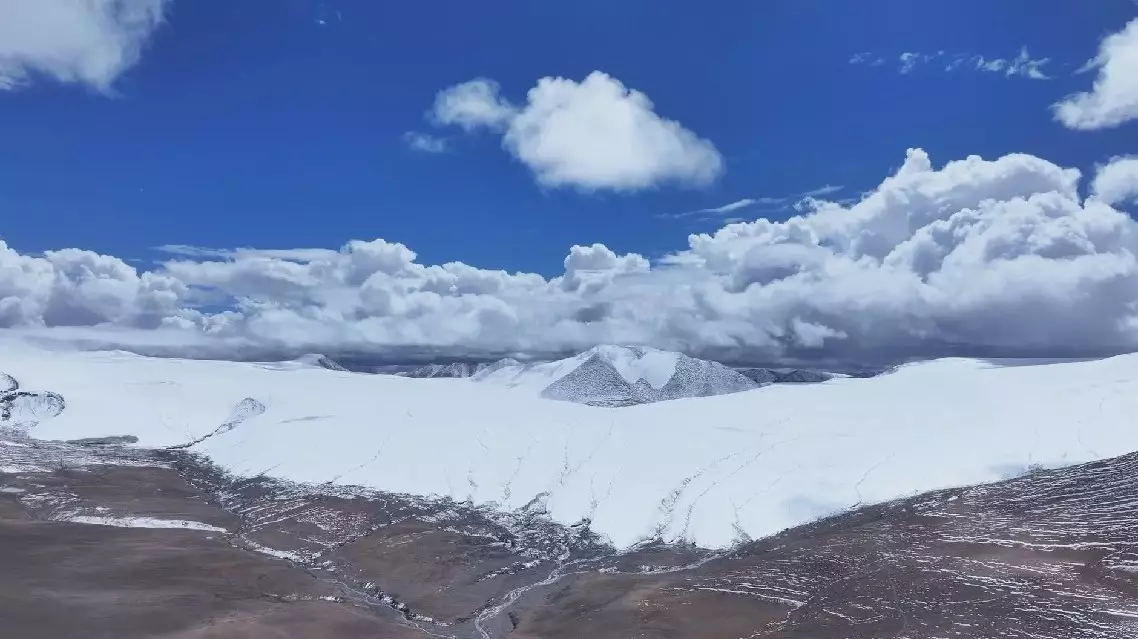
Scientists obtain critical ice cores during expedition in Qinghai-Xizang Plateau




